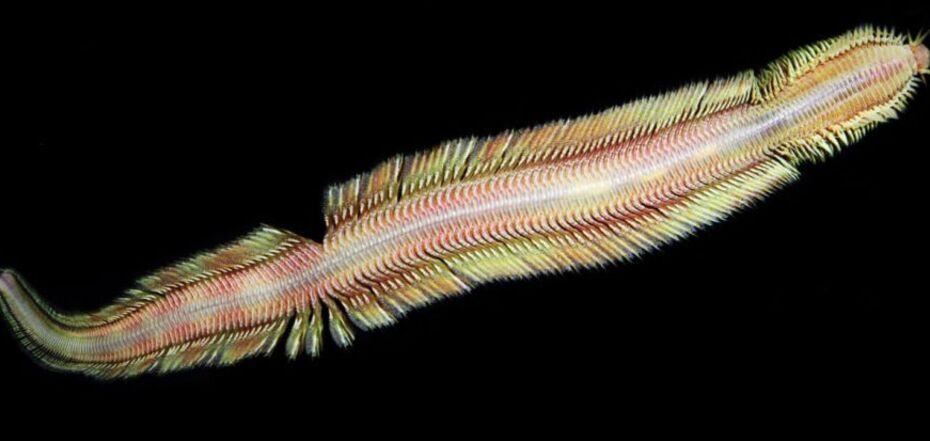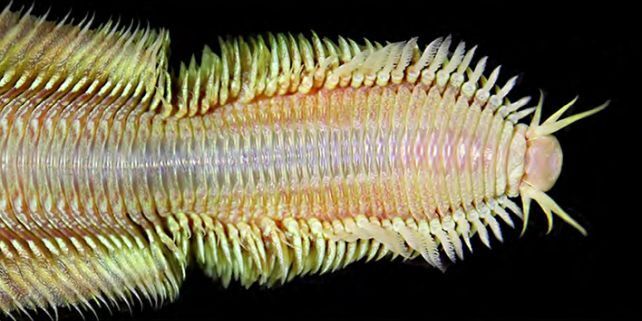News
Creepy creatures discovered in the darkest depths of the ocean: photos published
Pectinereis strickrotti, or shimmering worm, is the name given to the newly discovered inhabitants of the ocean depths. This is the 48th species found in methane seeps off the coast of Costa Rica.
Such an environment was previously considered inhospitable to living things, Science Alert writes. The discovery of the new organisms was made by a team of scientists led by marine biologist Greg Rouse of the Scripps Institution of Oceanography.
"At the moment, we have found more new species than we have managed to name and describe. This just goes to show how much unexplored biodiversity exists in the ocean. We must continue to explore the deep sea and protect it," says Rouse.
Worms in hostile depths
The ocean depths are extremely hostile to humans. Due to the crushing pressure, low temperatures, and lack of light, it is very difficult to get there.
Therefore, much is unknown about the deep ocean. Humans have explored only 5% of the world's oceans and have cataloged only 10% of the life that can be found at its depths.
Rouse and his colleague Bruce Strickrott, the lead pilot of the deep-sea submersible Alvin (after which the worm was named), first encountered the new species at a depth of about 1,000 meters during a team dive off the coast of Costa Rica.
"We saw two worms swimming near the bottom. We couldn't get a good look at them, so we tried to sneak closer. But it was hard to do in the submarine, and they got scared," Strickrott recalls.
Later, the team was able to return to the same spot. To their surprise, they found the same creature - not just one individual, but six - moving steadily in the water. This time, the underwater vehicle was able to get closer.
The team collected images, video, and even samples. With this prey, they returned to the atmosphere to catalog and study their findings.
Unique among their kind
The study of the collection showed that it was a new species of marine worm in the Nereididae family, also known as ragworms. Like other members of the family, Pectinereis strickrotti is a segmented, multi-bristled worm with a long body. The bristles that cover its sides are covered with leg-like appendages called parapodia and hidden jaws that extend for feeding.
Moreover, the males had unusual non-reproductive epithelial characteristics that seem to be unique among nereids. Further research is needed to find out how the worm lives and why it needs these characteristics.
It is also not known what this creature eats, although studying the chemosynthetic food web that emerges around methane leaks may help to clarify this.
Pectinereis strickrotti differs from other known ragworms in several very interesting ways. For starters, most known worms live at much shallower depths. Because it lives in bathypelagic darkness (water without light), Pectinereis strickotti is blind. In addition, most known ragworms absorb oxygen through parapodia (muscular outgrowths of the body) without the help of gills, while in Pectinereis strickrotti the parapodia are covered with gills.
In general, Nereididae have two life stages: the immature atoke stage, in which they spend most of their lives in a burrow on the seafloor; and the adult epitoko stage, which emerges and swims freely to reproduce before dying.
Because most of the specimens collected here were free-swimming males, and the only (partial) female specimen was collected from sediment, the team suspects that only males can be epitokes in this species.
Moreover, the males had unusual non-reproductive epitope characteristics that seem to be unique among nereids. Further research is needed to find out how the worm lives and why it needs these characteristics.
It is also not known what this creature eats, although studying the chemosynthetic food web that emerges around methane leaks may help to find out.
Subscribe to OBOZREVATEL's Telegram and Viber channels to keep up with the latest developments.





























